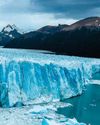THE HUNT FOR FARAWAY MOONS
How It Works UK
|Issue 200
Astronomers are looking for moons outside our Solar System that may have even more chance of hosting life than the planets they're orbiting

Long ago, the prospect of far-off inhabited planets was solely the domain of science-fiction writers. Famous tales abound of Time Lords from Gallifrey, superheroes from Krypton and hammer-wielding gods from Asgard, to name but a few. Given the number and variety of exoplanets – or planets outside of our Solar System – now being found by astronomers, fiction is fast falling into alignment with fact. But as well as planets, science fiction also tells of life thriving on the moons of exoplanets, or ‘exomoons’. Notable examples include the forest moon of Endor, home to the Ewoks in Star Wars, and the tree-covered Pandora in Avatar. Now, just as they did with exoplanets, telescopes are starting to bring exomoons into the realm of reality.
 “We were looking for exoplanets using a technique called microlensing,” said David Bennett, an astronomer at NASA’s Goddard Space Center. But using this technique, Bennett may have had the first-ever glimpse of a moon outside our Solar System.
“We were looking for exoplanets using a technique called microlensing,” said David Bennett, an astronomer at NASA’s Goddard Space Center. But using this technique, Bennett may have had the first-ever glimpse of a moon outside our Solar System. Microlensing is a method that exploits the fact that gravity bends light. If an object passes in front of a distant star, its gravity focuses the starlight like a lens and the star’s brightness temporarily shoots up. In research published in 2014, Bennett revealed that, using the MOA-II telescope in New Zealand, he’d seen a sharp rise in a star’s brightness, followed an hour later by a second, smaller increase. He deduced that a large object must have passed in front of the star with a smaller object in tow, hence the second spike.
 EXTENDED HABITABLE ZONES
EXTENDED HABITABLE ZONESBu hikaye How It Works UK dergisinin Issue 200 baskısından alınmıştır.
Binlerce özenle seçilmiş premium hikayeye ve 9.000'den fazla dergi ve gazeteye erişmek için Magzter GOLD'a abone olun.
Zaten abone misiniz? Oturum aç
How It Works UK'den DAHA FAZLA HİKAYE
How It Works UK
20 WEARABLE HEALTH TRACKERS
Whether you strap a wellness coach to your wrist or weave subtle sensors into your clothes, these devices are revolutionising how we track our health
9 mins
Issue 210
How It Works UK
SUPERPOWERED PLANTS
The world of plants is vibrant and diverse, just like this book.
1 min
Issue 210
How It Works UK
SECRET STORIES OF LOST BEASTS
We're all aware of the mighty dinosaurs that once roamed Earth, but there are so many weird and wonderful species that have been lost to time.
1 min
Issue 210

How It Works UK
ALL ABOUT BLIMPS
Is it a bird? Is it a spaceship? No... it's a non-rigid airship
2 mins
Issue 210
How It Works UK
SUPER QUESTERS MISSION: RAINFOREST MAGIC
Join adventurers Leo, Lilli and Bea as they transform into superheroes and journey to the rainforest in the pursuit of knowledge.
1 min
Issue 210

How It Works UK
HOW THE MIGHTY MAMMOTH RULED THE ICE AGE
Meet the prehistoric giants that roamed the Arctic Circle thousands of years ago
4 mins
Issue 210
How It Works UK
Have they found LIFE ON MARS?
Although it's by no means certain, scientists are slowly accumulating evidence that life once existed on the Red Planet
2 mins
Issue 210

How It Works UK
HOW FAST DO GLACIERS MOVE?
The speed at which a glacier flows depends on its mass, the depth and slope of the underlying rock bed and friction.
1 min
Issue 210

How It Works UK
HOW IN-FLIGHT WI-FI WORKS
This technology allows you to scroll to your heart's content while killing time at cruise altitude
3 mins
Issue 210

How It Works UK
HOW WIGWAMS WERE BUILT
Discover the construction and living conditions inside these traditional domed dwellings
1 mins
Issue 210
Listen
Translate
Change font size

